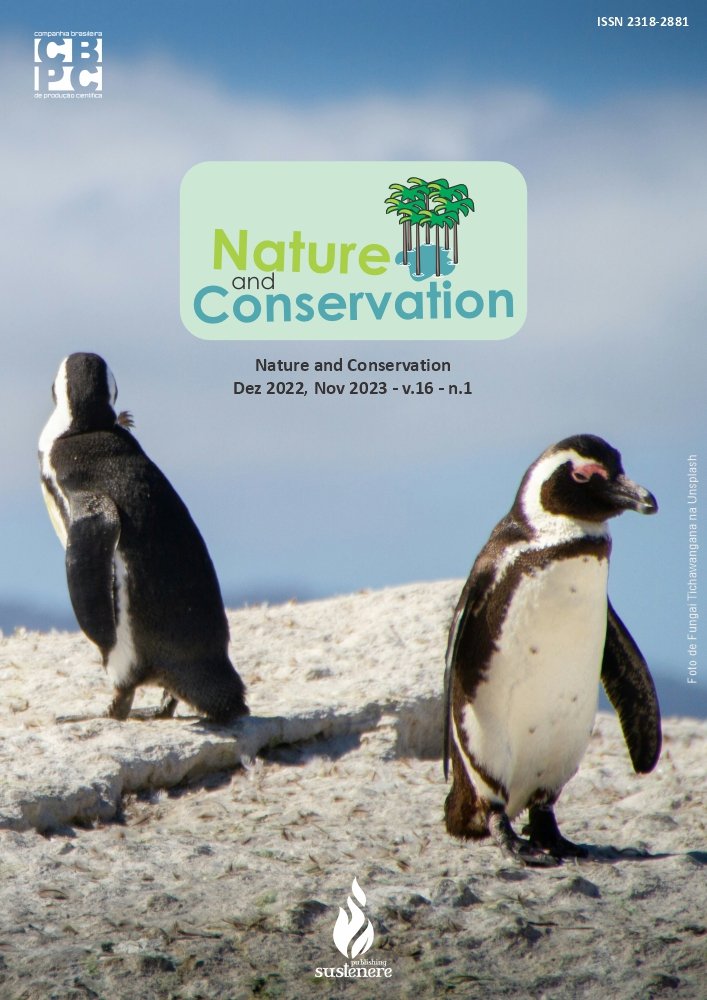Bioactive compounds in lettuce cultivars produced in weather conditions in southeast paraense
DOI:
https://doi.org/10.6008/CBPC2179-6858.2021.010.0040Keywords:
Lactuca sativa L., Anthocyanin, CarotenoidsAbstract
The levels of chemical substances present in excess or shortage can influence the development of horticultural crops, in addition to harming human nutrition. Therefore, the objective of this work is to evaluate the levels of bioactive compounds present in lettuce cultivars produced in Paragominas-PA, and based on that, to determine which ones presented satisfactory development. The work was carried out in a greenhouse located at the Federal Rural University of Amazônia (UFRA), in Paragominas-PA, and the samples were analyzed in the ICA laboratory at UFRA campus Bélem. The experimental design used was in randomized blocks, with 10 treatments and 4 replications. The treatments were 10 lettuce cultivars (Betânia, Giovana, Lirice, Lucy Brown, Luiza, Mônica SF 31, Pira roxa, Regina, Rubinela and Stella-manteiga). The parameters evaluated were: levels of chlorophyll “a” and “b”, anthocyanin, carotenoid, nitrate, protein, free ammonium, sucrose, carbohydrate and amino acid. Data were subjected to analysis of variance (F test) and means compared by Tukey test at 1% probability, using the SISVAR software program. The Rubinela cultivar showed a significant effect for chlorophyll a and b contents. Cultivars Luiza and Pira Roxa had higher of anthocyanin contents. Cultivars Luiza, Lirice and Betânia had higher carotenoid contents. Rubinela and Pira Roxa had better accumulated nitrate contents. The cultivars Betânia and Stella stood out in terms of ammonium content. Cultivar Lucy Brown had higher sucrose content, and cultivars Mônica and Rubinela had higher levels of amino acids. Therefore, the cultivars recommended for the region of Paragominas, based on the conditions used in this experiment, were the cultivars: Luiza; Monica; Rubinela and Pira Roxa, which presented better results for most of the analyzed biochemical parameters. Such cultivars showed satisfactory levels for the parameters: Chlorophyll; Carotenoid; Anthocyanin; Nitrate; Carbohydrates; Proteins and Amino Acids. All analyzed cultivars were able to develop under the edaphoclimatic conditions of Paragominas – PA, making the lettuce production viable in the region. Currently, there is a shortage of studies with bioactive compounds in lettuce cultivars for the northern region, especially Pará, which makes it necessary to carry out more studies focused on the area.
Downloads
Downloads
Published
Issue
Section
License
Copyright (c) 2021 Ibero-American Journal of Environmental Sciences

This work is licensed under a Creative Commons Attribution-NonCommercial-NoDerivatives 4.0 International License.
The CBPC - Companhia Brasileira de Produção Científica (Brazil CNPJ: 11.221.422/0001-03) the material rights of the published works. The rights relate to the publication of the work anywhere in the world, including rights to renewals, expansions and dissemination of the contribution, as well as other subsidiary rights. All electronically published works may subsequently be published in printed collections under the coordination of this company and / or its partners. The authors preserve the copyright, but are not allowed to publish the contribution in another medium, printed or digital, in Portuguese or in translation.









